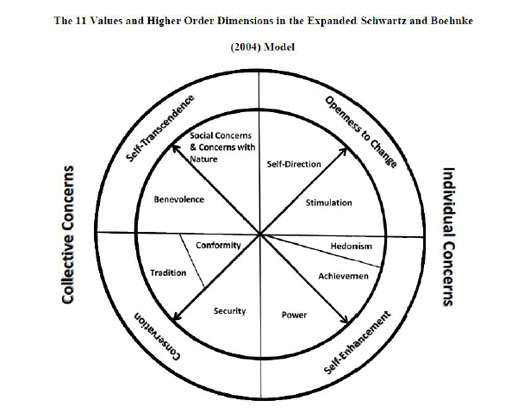Branding across cultures
For international brands aiming to position themselves in countries with a different culture, there is a risk that their marketing message will miss the target. Using tools from social psychology and cultural studies, Natalia Mæhle from SNF and international colleagues have found connections that make it easier to tailor global brand concepts. In Norwegian
10.05.2012 - Ingrid Hågård Bakke (translated by Silje Gjerde/Allegro)
Today, brands are often equipped with what are known as brand concepts - collections of abstract values that a brand is associated with and that manufacturers want consumers to identify with.
In their desire to grow, more and more brands are choosing to expand internationally, which involves many challenges in relation to expanding the brand concepts.
How can companies ensure that cultural differences are taken into account, while also ensuring that the new values are compatible with the values already established for the brand?
Post-doctor Natalia Mæhle from the Institute for Research in Economics and Business Administration (SNF) and a group of international research colleagues look more closely at these challenges in the article 'Brand Concepts as Representations of Human Values: Do Cultural Congruity and Compatibility Between Values Matter?', which will be published in the prestigious Journal of Marketing this spring.
'Our work is based on research that shows that marketing that plays on abstract and symbolic human values has a greater impact on the consumer than marketing that focuses on the product's physical characteristics. The question is thus which values are compatible with each other, which are conflicting, and which values will appeal to different cultures,' Mæhle explains.
Compatible and incompatible values
'Our findings are threefold: connections in human values can be transferred to marketing, they can be used in connection with the cultural categorisation of countries, and negative effects of incompatible values in brand concepts can be reduced if the new values match the new consumers' cultural values.'
'Firstly, we have found that Shalom H Schwartz's general typology of human values (1992) can be transferred to and used in marketing,' the researcher states.
Schwartz divides human values into the four categories of conservation, openness to change, self-enhancement and self-transcendence. In the marketing context, some of these values can be combined, while others should not be used together.
'Conservative values such as tradition and conformity are not very compatible with the quality of being open to change. A product cannot be promoted as being traditional and innovative at the same time,' Mæhle explains.

The figure shows Schwartz's typology of human values. In marketing, a self-enhancing brand value should, for example, not be combined with a self-transcendent value. It can, on the other hand, be combined with either conservative or open values, but not both of them, since they are opposites.
'General Motors' Oldsmobile once tried to expand its image as a respectable middle class car to also be seen as hip and sexy, a strategy that proved unsuccessful. This is because consumers often do
not identify with both of these dimensions and will therefore not identify with the product. The same applies to the relationship between self-enhancement and self-transcendence.'
Except for opposites, values from one category can be combined with values from the other categories.
'One example of this is Apple. They succeeded in combining the slogans "The power to be your best" and "Think differently" because the former is self-enhancing while the latter represents openness to change, and these two categories are compatible,' she tells us.
Targeted international marketing
More and more global brands are trying to position themselves in countries with a different culture. Classifying countries along cultural dimensions is a useful tool in this context.
The study's second finding is that it has found connections between cultural values and brand concepts based on Schwartz's values.
'We combine Geert Hofstede's well-known distinction between individualistic and collectivist cultures (1980) with a distinction between horizontal and vertical social structures. We then arrive at four cultural categories: horizontal individualistic, horizontal collectivist, vertical individualistic and vertical collectivist. We have identified which of Schwartz's values match each of the cultural categories,' Mæhle explains.
Eight countries
The researchers have tested their hypotheses in eight countries: Norway, the USA, Canada, Australia, China, Brazil, Turkey and Mexico.
'Norway is largely horizontal individualistic. That means that we have a strong focus on the individual and relatively non-hierarchical social structures. The USA is also individualistic, but it generally has a more vertical social structure, with bigger differences and clearer hierarchies. These attitudes must be taken into consideration if you want to achieve effective global marketing,' Mæhle says.
'We have found that openness values appeal to horizontal individualistic countries, while such countries do not identify as much with self-enhancing values. The opposite is true of vertical individualistic countries,' she adds, and continues:
'Vertical collectivist countries, such as China, are more conservative and also do not identify with self-transcendent values. This is because hierarchical societies indicate self-enhancing attitudes. The opposite applies to horizontal collectivist societies.'
Local adaptation is always important
The study's third finding is that consumers' reactions to a brand's new values are more positive if the new values are compatible with the consumers' own cultural values. This conclusion thus strengthens the other findings.
'In cases where new values were not compatible with established brand values, the negative effect
was reduced if the new values matched the consumers' own values. This means that, in a situation where total compatibility is impossible, it is better to compromise on existing brand values than on local, cultural values in the market,' Mæhle concludes.

SNF researcher Nathalia Mæhle
Foto: Hallvard Lyssand
An ambitious project
The study is a collaborative project involving researchers from five different countries. Mæhle met prime mover and project manager Carlos J Torelli during a research stay at the University of Illinois in the USA. Torelli brought Mæhle and three other researchers from Turkey, Canada and Australia on board.
'It was necessary to include researchers from all over the world in order to obtain data from different countries. Our study comprises eight countries in all parts of the world, and we have used large amounts of data from these countries to substantiate our findings,' Mæhle concludes.
The research team has worked on the project for almost four years. The article will now be published in the prestigious Journal of Marketing. The publication is already available online, and the paper version will be published this summer.
C. J. Torelli, A. Ozsomer, S. W. Carvalho, H. T. Keh og N. Maehle 2012. Brand Concepts as Representations of Human Values: Do Cultural Congruity and Compatibility Between Values Matter? Journal of Marketing. e-View.
|

